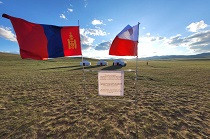 In June, July and August 2023, the Institute's staff continued field research, in the region of Mongolia's Khangai Mountains. The works were carried out under an agreement between the Polish Geological Institute – National Research Institute (PGI-NRI) and the National Geological Survey (NGS) of Mongolia and were in the nature of deposit reconnaissance.
In June, July and August 2023, the Institute's staff continued field research, in the region of Mongolia's Khangai Mountains. The works were carried out under an agreement between the Polish Geological Institute – National Research Institute (PGI-NRI) and the National Geological Survey (NGS) of Mongolia and were in the nature of deposit reconnaissance.
Two research teams were involved. The first group, led by dr Rafał Sikora, was working in Mongolia from 13 June to 18 July 2023. About this expedition we have already described in a separate article.
The second team, led by prof. dr hab. Antoni Wojcik, conducted research from 18 July to 22 September 2023, within an area called Zadgai Bulag.
The group consisted of specialists in deposit geology, geochemistry, geomorphology, petrology and cartography. It included four staff members of the PGI-NRI's Department of Reservoir and Economic Geology: mgr inż. Anna Januszewska, mgr inż. Tomasz Bieńko, mgr Remus Weekes, mgr Andrzej Chmielewski and mgr inż. Adam Karol Chaszczewicz from the PGI-NRI's Geohazards Center.
Team carrying out work in the Zadgai Bulag area
At the time of the change in research groups, the project manager mgr inż. Radomir Pachytel and prof. dr hab. Stanisław Mikulski were in charge of the camp. They were carrying out their own research projects as a third team. Prof. Mikulski's tasks also included supervising the methodology of the entire expedition.
In terms of content, the work was supervised by prof. dr hab. Antoni Wójcik, who has a unique and invaluable knowledge of the Mongolian geology thanks to his experience gained from national mapping work and many previous expeditions in this region.
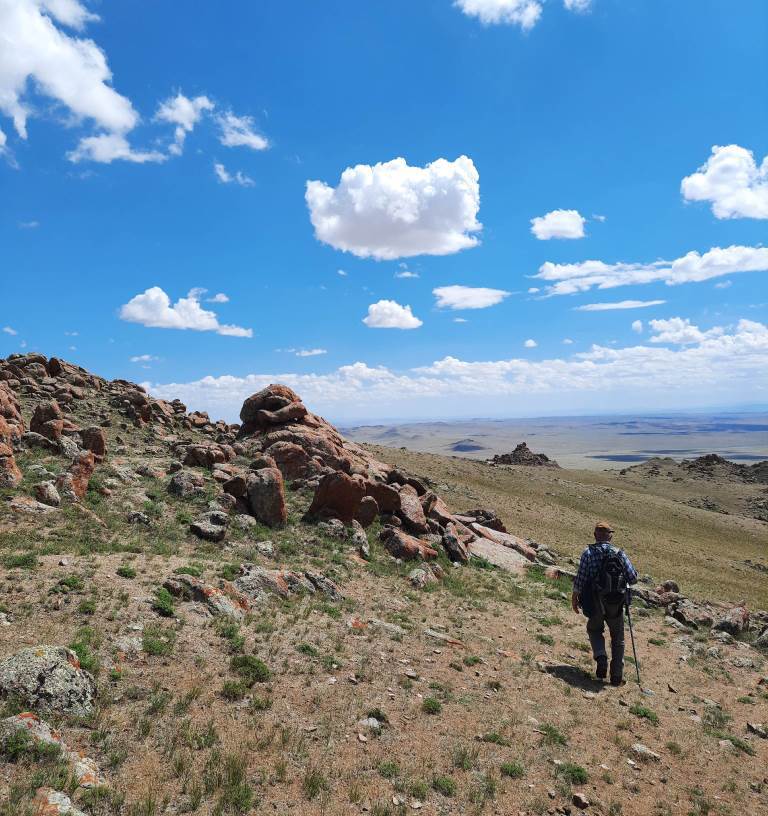
Professor Antoni Wójcik in the field
The Zadgai Bulag research area is located on the south-western flank of the Changai Mountains. It has an area of about 80 km2 and comprises a mountain massif and a plateau towering over the steppe. Its distinctive feature is the presence of a deep erosion valley in the northern part and a high ridge (about 2600-2800 m above sea level) on the south. There are no permanent surface watercourses. The average altitude oscillates around 2000 m above sea level. The landscape is dominated by dry steppe vegetation and numerous rock outcrops.
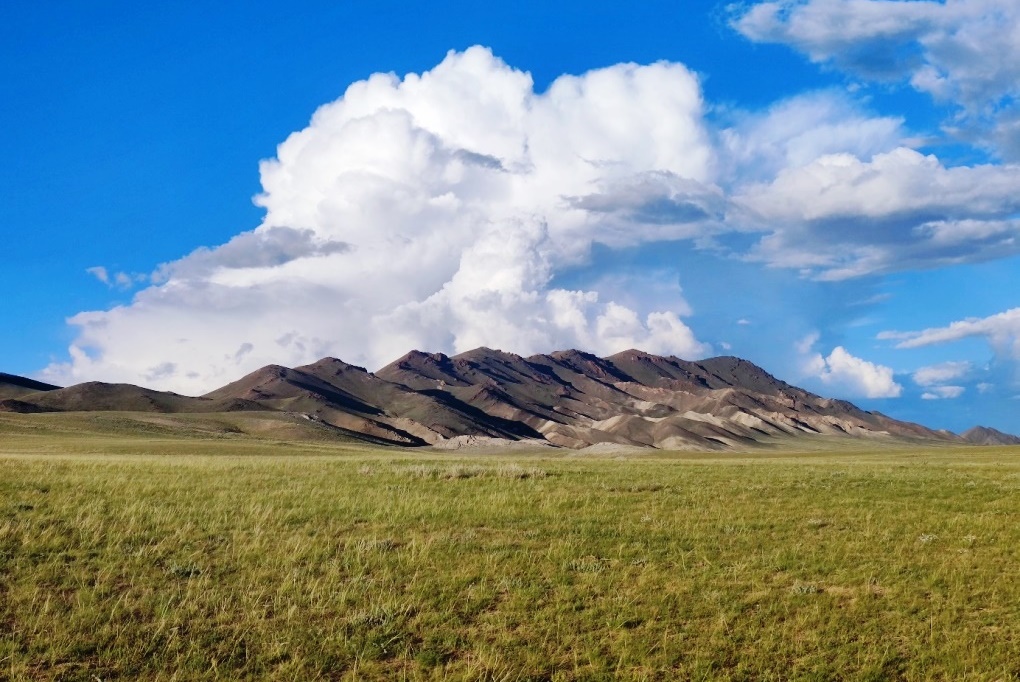
Majestic mountain ridge in the southern part of the Zadgai Bulag area
Geologically, the Zadgai Bulag area forms part of the Zavkhan terrane. It is mainly composed of plutonic rocks of Palaeozoic age and locally Precambrian sedimentary and meta-sedimentary formations. The area has a complex geological structure, the interpretation of which is additionally complicated by the presence of numerous faults.
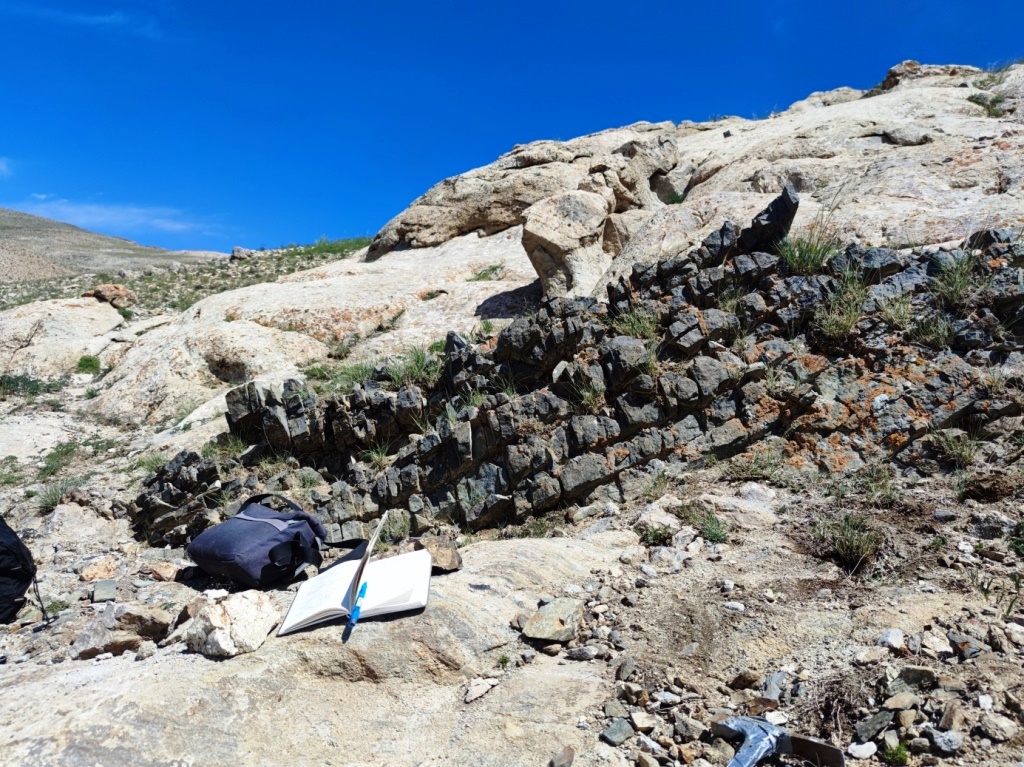
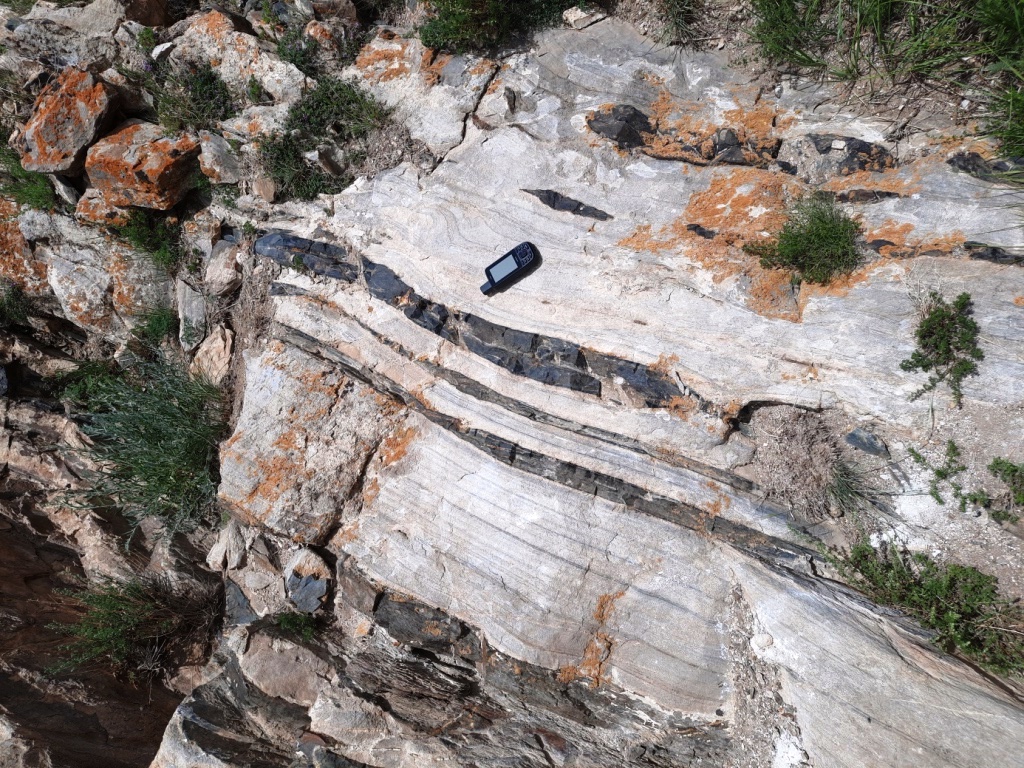
The fascinating geology of the Zadgai Bulag area
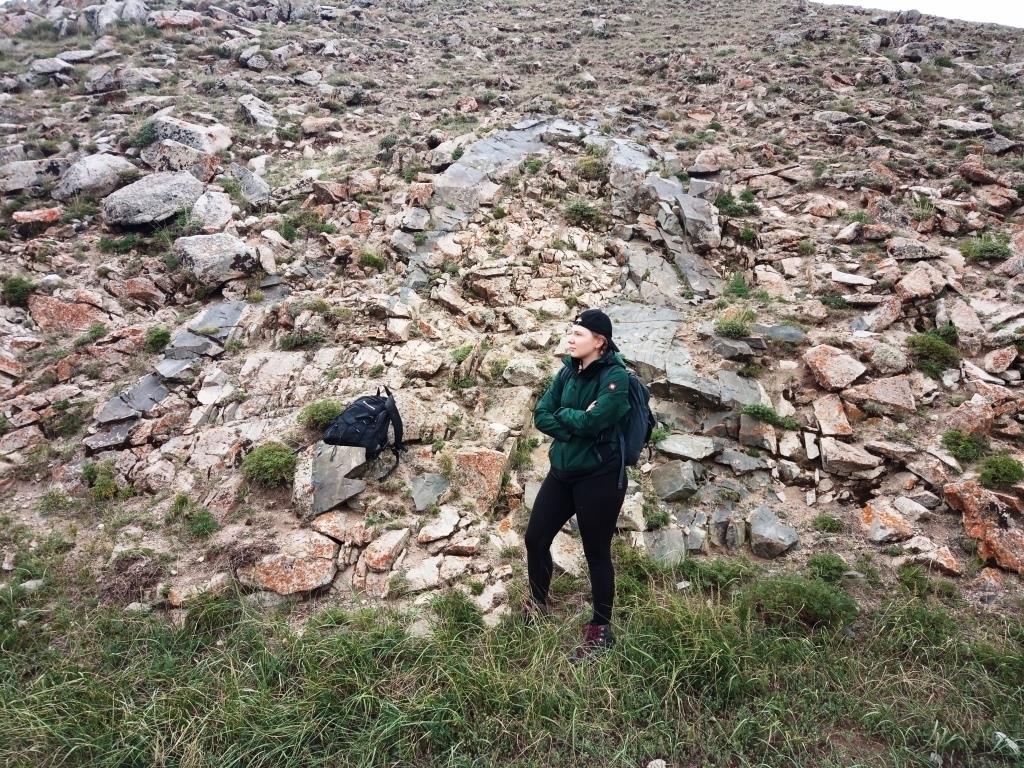
Mgr inż. Anna Januszewska posing 'for scale' at a porvak-fold of metamorphosed granites
During the work, detailed sampling of the study area was carried out. The team collected a total of 296 soil samples. Most of these were pieces of rock for lithogeochemical or petrographic studies. This number also included 39 schist samples.
These were taken from bottom sediments filling valleys, erosion gullies, ravines and the beds of periodic watercourses. The need to wash the excavated material to obtain concentrates involved travelling to the Zavkhan River, some 20 km away. These expeditions were the favourite trips among participants, as they offered respite from the steppe heat.
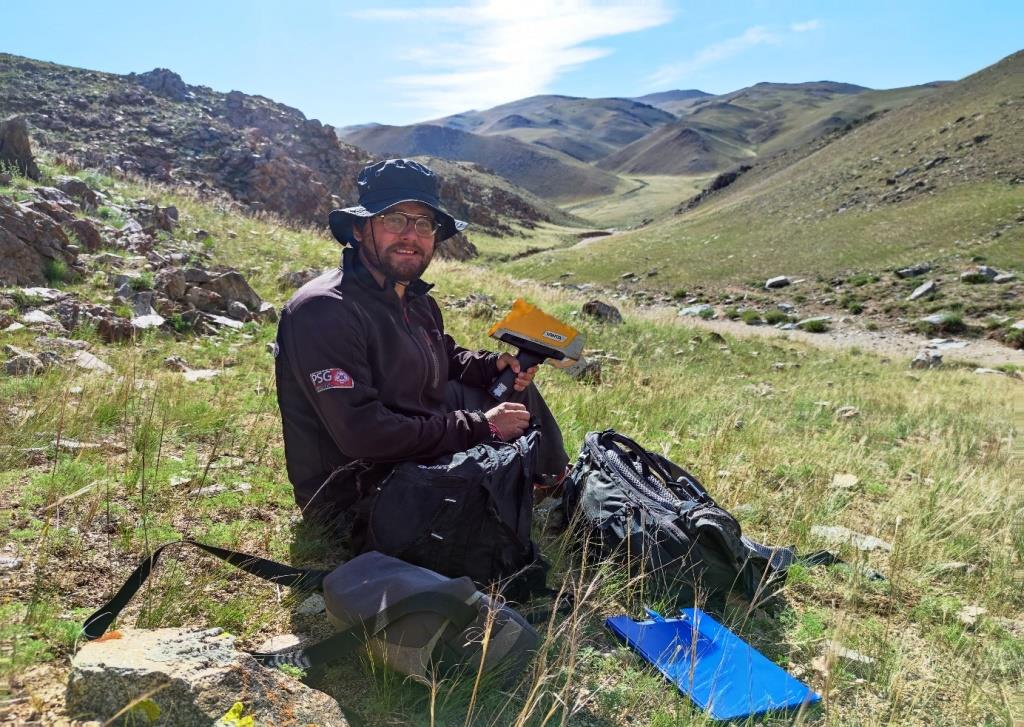
Mgr Andrzej Chmielewski with XRF spectrometer in hand, during research and sampling
The analysis of the collected material will be carried out in the following months and years by both Polish and Mongolian research centres.
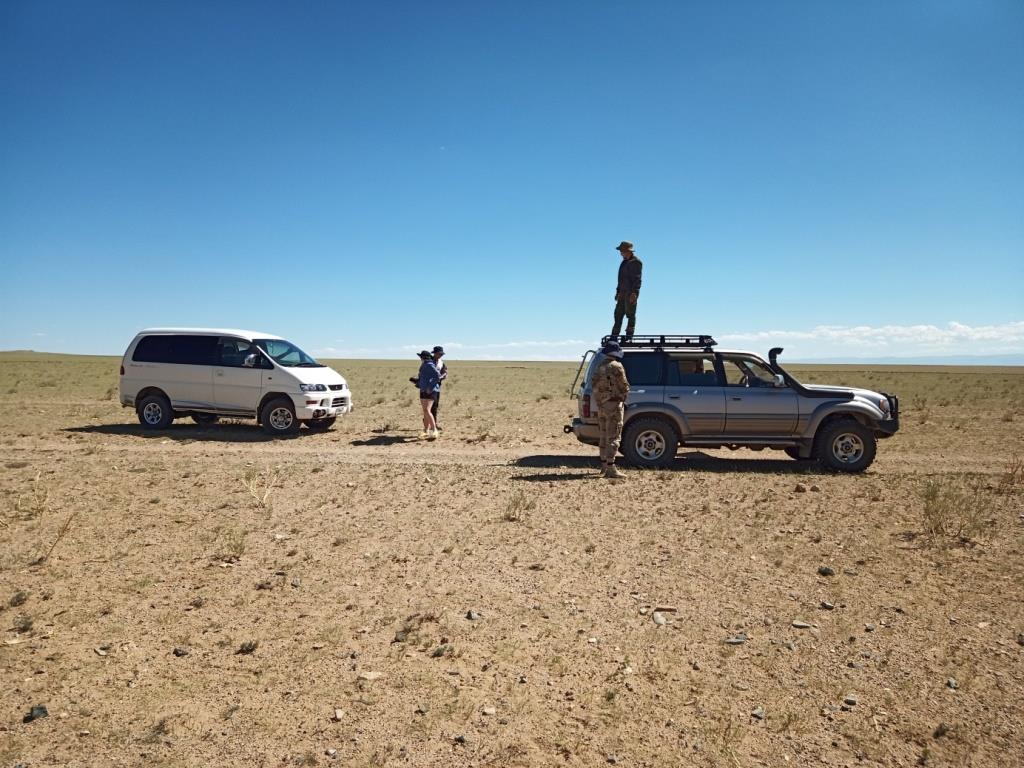
From above it is possible to see further, especially in the steppe
Mongolians also participated in the expedition's work. Particularly valuable was the cooperation with Batu, a Mongolian geologist, who actively participated in the fieldwork. Thanks to this, it was possible to exchange knowledge experiences and insights. His logistical support was also invaluable.
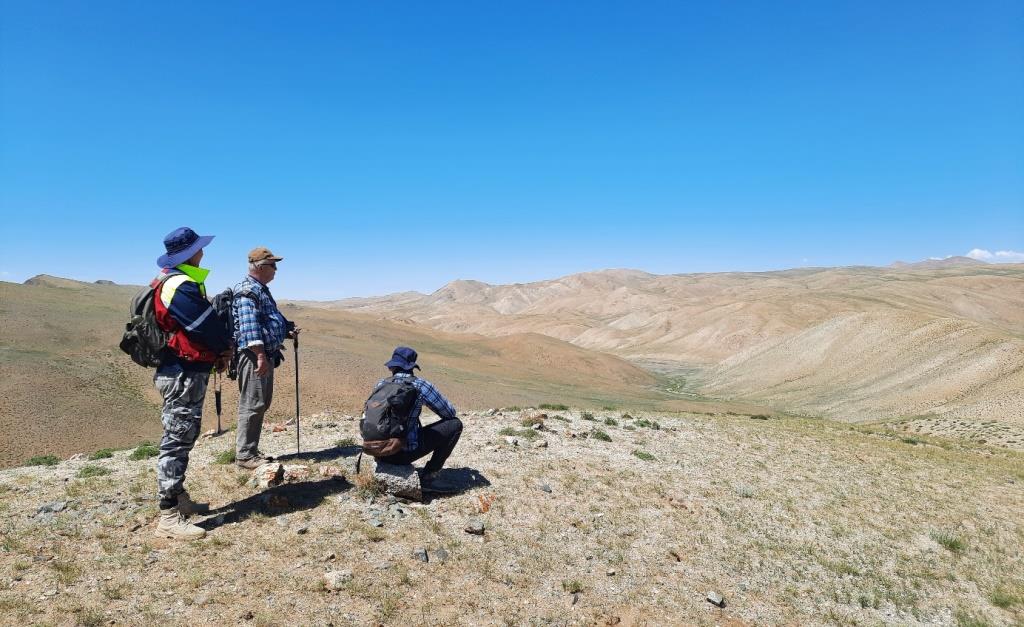
Joint Polish-Mongolian reconnaissance of the study area
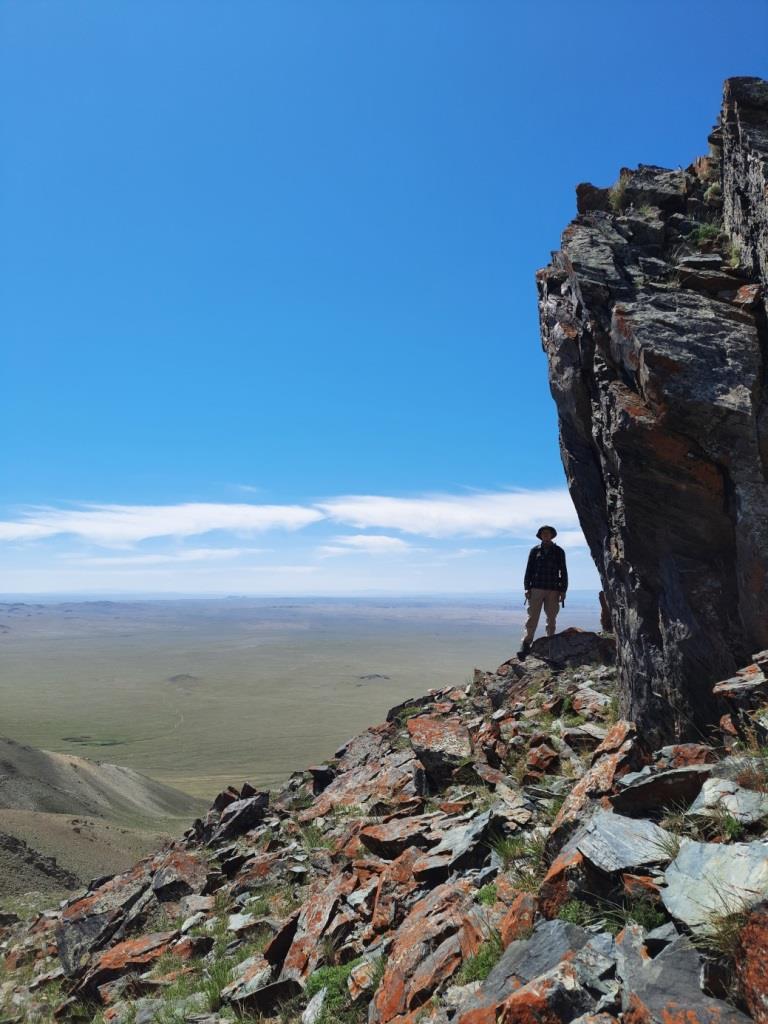
Exposure of metasedimentary and magmatic rocks in the southern part of the study area
On more than one occasion, Mongolian drivers have also expressed their willingness to help with the work of digging, carrying and washing the schist samples. The cooperation between both groups has contributed not only to the development of science, but also to the building of strong international relations and cultural exchange.
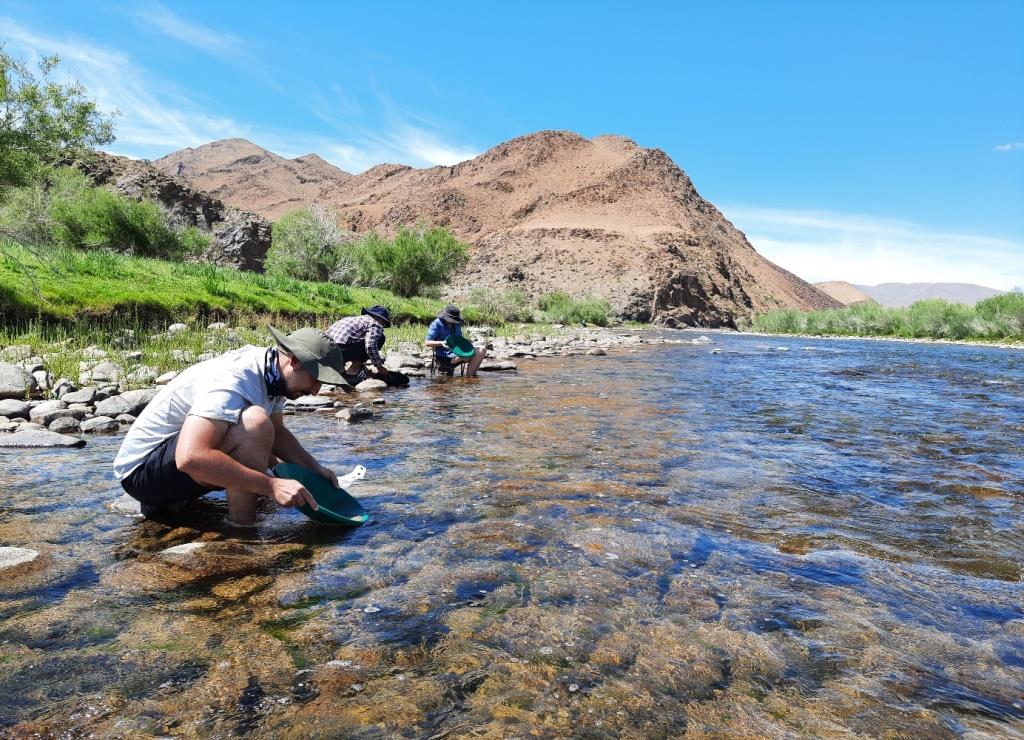
Washing of schist samples
The participants of the expedition admired the local nature. Starry nights, filled with the spectacle of shooting stars, associated with the collision during this period of the Earth's orbit with the meteor swarm known as the Perseids, proved particularly beautiful.
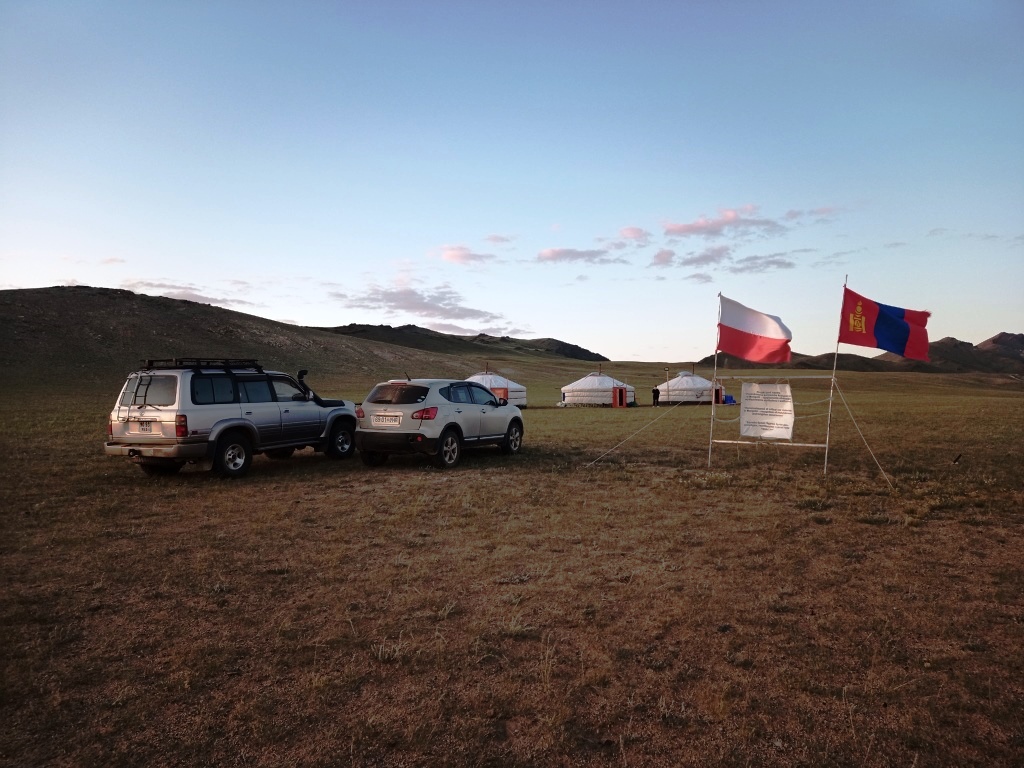
Camp in the Zadgai Bulag area
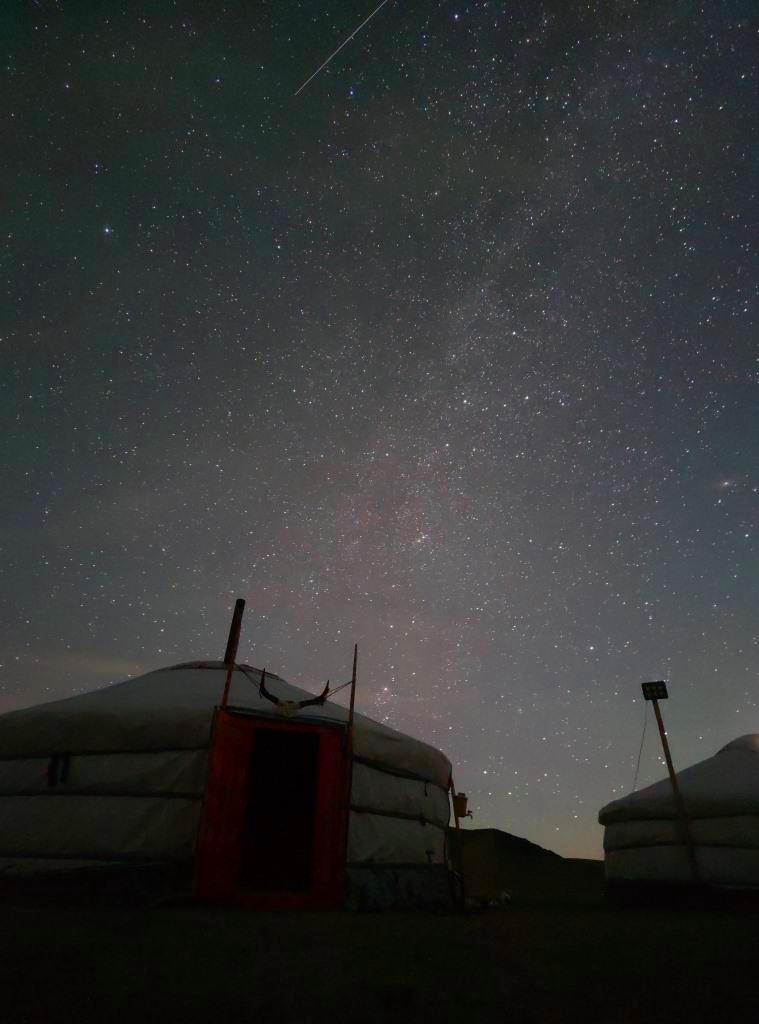
Night sky over the camp
The expedition to Mongolia was a unique opportunity for the participants to expand their geological knowledge, as well as a very informative learning experience of working in a diverse group. The groups were selected so that specialists in sedimentology and tectonics were working together with experts in deposit geology, geochemistry and mineralogy. This combination allowed for a comprehensive view of the study area.
Further scientific work to determine the deposit potential of Zadgai Bulag will be carried out by the expedition participants in Polish laboratories.
Text and photos: Tomasz Bieńko, Adam Chaszczewicz, Anna Januszewska, Remus Weekes















 PGI-NRI offer
PGI-NRI offer Mineral resources of Poland
Mineral resources of Poland  Oil and Gas in Poland
Oil and Gas in Poland 




 Subscribe to RSS Feed
Subscribe to RSS Feed